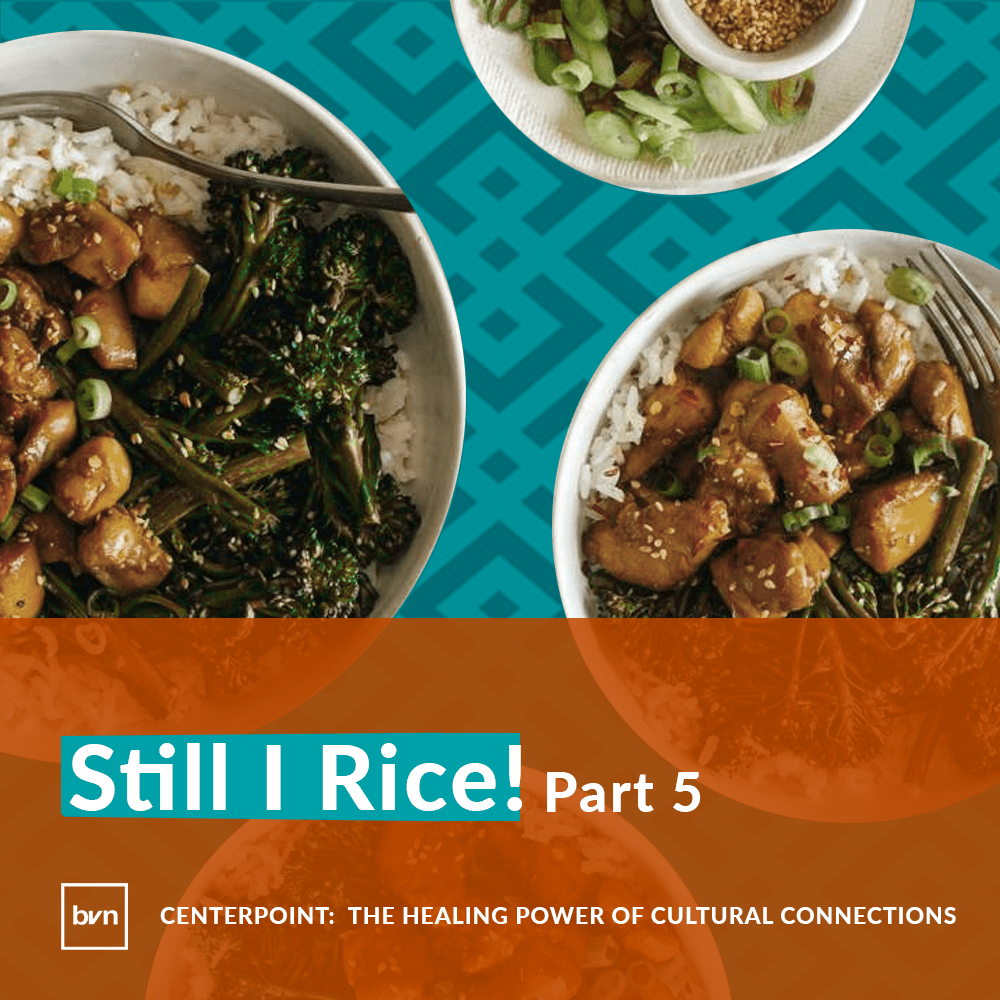Last Updated on December 4, 2023 by BVN
Theresa Polley-Shellcroft, Guest Artist | Aryana Noroozi, Reporter-Curator
In the process of documenting and understanding the history of rice, Black Voice News reached out to the community for their insight and expression of the history of rice within African American culture. We held an open call for Black artists to create art to be featured as part of the Still I Rice! series.
In this artists’ open call we wanted to share art that highlights the history of rice within the Black community. We welcomed any form of art, from written to visual. We received submissions from artists T. Faye Griffin, Theresa P. Shellcroft and Delgreta Brown, the first two who are based in the Inland Empire. Check out their submissions in this section of the Still I Rice! series.
![According to Polley-Shellcroft, this “Mixed media collage, paint and rice grains, [was created] on burlap canvas board 16 x 20 inches” piece focuses on the Middle Passage and its horrors. “My ancestors smuggling rice represents their resilience, drive for survival and resistance to the Trans-Atlantic Slave trade. I chose the browns as symbols of skin color, as well as the nightmare spaces in the ship’s hull,” she said. Artwork photographed by Theresa D. Polley-Shellcroft](png/still_i_rice_pt5_178fe.png)
“When I saw the title of this artist call, I was not sure that I read it correctly as ‘Rice’ instead of ‘Rise,’” said Theresa D. Polley-Shellcroft, artist and professor of African and African American Art at Victor Valley College. “Reading further, I was corrected.”
Initially, Polley-Shellcroft had not given much thought to rice since she did not grow up eating it. In fact, she did not try the grain until she was a college student visiting a friend’s family in New York City around 1965. There, she tried red beans and rice for the first time.
In 1975, she lived in Washington, DC, where she worked at the Smithsonian in the African Diaspora section of the American Folklife Festival. “During the bicentennial years of 1975 to 1976, I had the opportunity to mingle with African cultures from all over as well as those in Washington DC. It was during those years that I developed the taste for ‘Peas’ and Rice as it is known among the African cultures in the diaspora,’ she said.
In the Smithsonian African Diaspora program, Polley-Shellcroft was the Learning Center Co-Coordinator, where she was tasked to put together an African Diaspora cookbook, collecting recipes from African Cultures in the local community and respective embassies.
“Needless to say for a graduate student studying African/African American Cultures and cultural expressions, no better opportunity than to sit and to collect stories around food,” said Polley-Shelcroft.

Polley-Shellcroft grew up in Huntington, West Virginia, at the tip of Ohio, West Virginia and Kentucky.
“My maternal family members, the Polleys, were enslaved in Kentucky, then, emancipated by will of the owner, who was the father of my great, great, great grandfather, Peyton Polly (Polley),” she said. After being emancipated, the family traveled by boat to Southern Ohio, an abolitionist state. However, David Polly’s son-in-law did not agree with his decision and soon sent slave catchers, claiming they were “runaway slaves.”
The nine children of Peyton Polley were then kidnapped and sold back into slavery.
“Their father, my great-great-great-grandfather, Peyton, filed a lawsuit in 1850 in the state of Ohio to get the children back,” said Polley-Shellcroft. One of those children, Harrison, age nine at the time, was her great-great-grandfather.
“For various reasons, the lawsuit was not settled until 2012, making it the longest ‘runaway slave’ case in U.S. History to date,” Polley-Shellcroft said.
The final case was heard in Wayne County, West Virginia, where four of the children were enslaved. In 2012, the judge ruled that the sale of these children was illegal and they were declared free as of 1859.
The Peyton Polly genealogy was presented on PBS “Finding Your Roots in Connection” with John Legend. “We are the same family,” Polley-Shellcroft said. “Warriors!”
Polley-Shellcroft responded to Black Voice News’ “Still I Rice” public callout for Black artists, curious about exploring rice’s ties to both African and African American culture through visual media.
Theresa D Polley-Shellcroft’s artist statement
My maternal grandparents, grandfather, Leonard Polley and grandmother, Daisy Still Polley (the Stills, from Pomeroy, Ohio were free persons). They were both raised in Ohio. Our diet was Midwestern. Through research, I have learned of the importance of rice in African/African American history and culture. Bringing rice to this world from Africa, I see as a twofold act: sustenance and resistance. Our African ancestors, though in bondage, were ever so wise in smuggling rice into this land.
For my artwork I elected to stage the introduction of rice via the Middle Passage. Although the [captured Africans] were in deplorable conditions during the voyage, those grains of rice [carried on their persons] represented hope which never left their perspective or outlook. Staying true to their culture, hope remained. To honor my ancestors, I created several works of art.
This project was supported in whole or in part by funding provided by the State of California, administered by the California State Library.
Still I Rice!
Part 1: Origins: The History of Rice in American Culture
Part 2: A Visual Archive: Rice’s History in African American Culture
Part 3: Un-Gumbo
Part 4: Traditions and Core Memories: Stories through Rice
Part 5: Middle Passage into the Future
Part 6: A Tale of Two Rices
Part 7: Sitting Pretty




